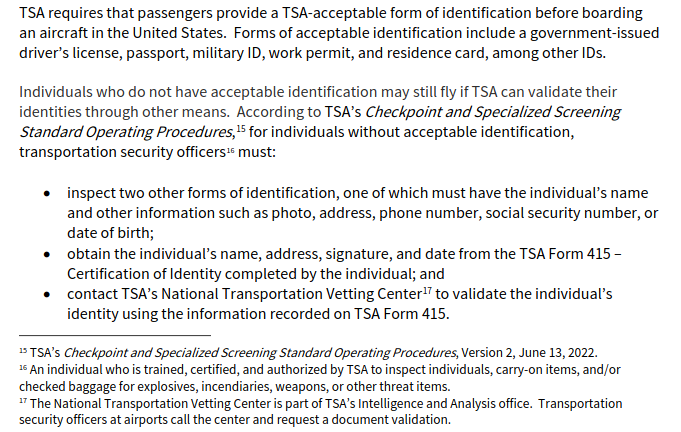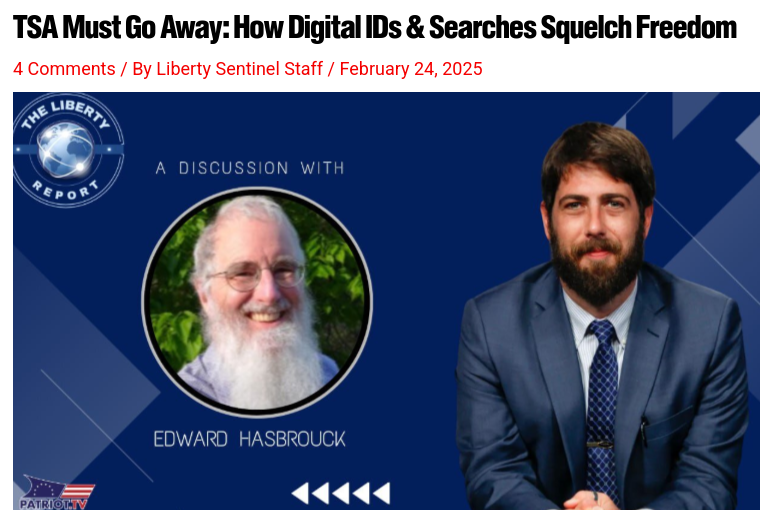TSA Confirm.ID: TSA plans to charge air travelers without ID or without REAL-ID $3B a year in extra fees for extra questioning
Since scare tactics haven’t gotten everyone in the U.S. to sign up for REAL-ID or show ID whenever they fly, the Transportation Security Administration (TSA) is turning to extortion through the threat of a new $45 fee to fly without “acceptable” ID.
The proposed fee and the modified “ID verification” program it would pay for are being described by the TSA as a fait accompli. But even if they were authorized by Congress and Constitutional — which we don’t think they are — they have several months-long procedural hurdles to clear before they could legally be put into effect, and even then they would face the possibility of litigation by travelers, states, airlines, and perhaps others.
$3 billion dollars a year in extra fees for extra questioning of flyers
In its latest round of rulemaking by press release, the TSA has issued a series of procedurally irregular announcements indicating that the agency plans a new fee-based procedure for air travelers without “acceptable” ID, including those presenting ID that the TSA deems not to comply with the REAL-ID Act and those who don’t have or don’t show any ID at all:
- A notice published by the TSA in the Federal Register on November 20th said the fee for flying without ID or without REAL-ID would be $18 per person for each ten-day period.
- A second notice published on December 3rd, just two weeks later, announced that “based on review and revision of relevant population estimates and costs… and a revised methodology… TSA recalculated overall costs and determined that the fee necessary to cover the costs of the TSA Confirm.ID program is slightly more than $45.”
The drastic revision of the cost estimate and fee, so soon after the initial announcement, suggests that the initial estimate was sloppy, rushed, or both, and perhaps that the entire new program is being hastily implemented, may not yet be clearly defined, and may fit the definition of agency action that is “arbitrary, capricous, an abuse of discretion, or otherwise contrary to law”. Any such action is liable to be “set aside” by the courts on the basis of the Administrative Procedure Act (APA).
According to a press release posted on the TSA website on December 1st, “Currently, more than 94% of passengers already use their REAL ID or other acceptable forms of identification.” That’s only one percentage point higher than the 93% compliance the TSA announced after the first few weeks of REAL-ID “enforcement” in May 2025. These largely unchanged numbers suggest that the TSA is making little progress in persuading more travelers to sign up for a national-ID scheme or show their papers at TSA checkpoints.
Based on the current rate of roughly three million people a day passing through TSA checkpoints, 6% of whom don’t show ID the TSA deems “acceptable” (or don’t show any ID), 180,000 people a day would be assessed the proposed new $45 fee. That would generate $8.1 million a day, or $2.96 billion a year, in new revenue for the TSA.
The TSA’s initial notice claimed that currently “taxpayers pay[] for an individual’s identity verification services provided by TSA”. But each airline passenger already pays a fee of $5.60, collected by the airline, each time they pass through a TSA checkpoint at an airport.
This “9/11 Security Fee” was imposed when the TSA was created, and is supposed to cover the TSA’s costs of searching air travelers. Air travelers, not taxpayers, pay for the TSA to grope, interrogate, and delay us. Charging a fee for this “benefit” is like charging a “police user fee” to be pulled over in a traffic stop, even if no violation is found and no citation is issued.



